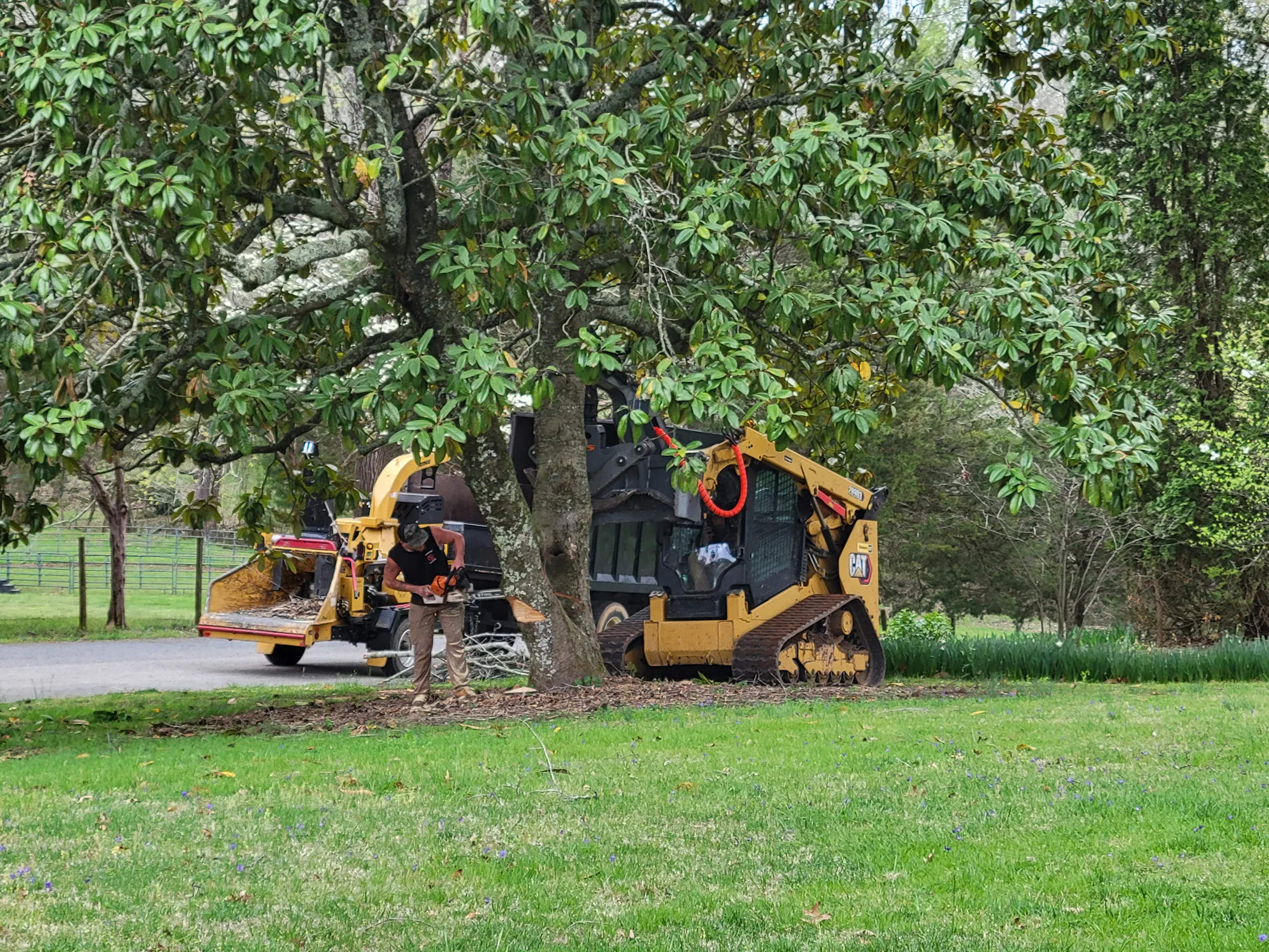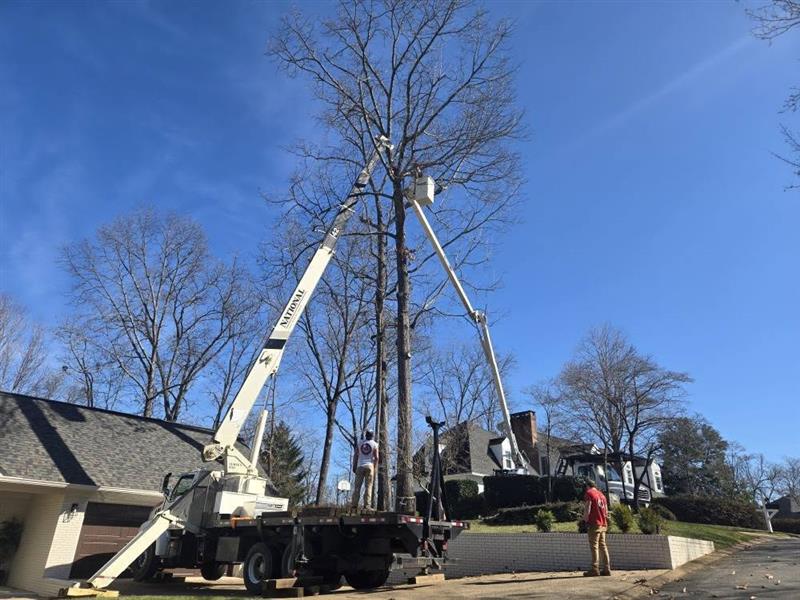Trees add beauty, shade, and value to a property, but they can also become dangerous if they are diseased, damaged, or unstable. A hazardous tree can pose a serious risk to people, homes, and vehicles. Knowing how to identify and remove hazardous trees can prevent accidents and costly damage. Understanding how to identify and remove hazardous trees is essential for maintaining safety.
In this guide, we’ll cover:
- How to identify a hazardous tree
- What causes trees to become dangerous
- The safest ways to remove them
- When to call a professional tree service

Signs That a Tree Is Hazardous
A tree might look fine at first glance, but certain warning signs indicate it could be at risk of falling. Here’s what to watch for:
- If a tree is suddenly leaning, it may have root damage or soil instability.
- A slight lean is normal, but a sharp tilt can mean the tree is at risk of falling.
Dead or Dying Branches
Understanding how to identify and remove hazardous trees enables swift action in emergency situations.
In this guide, we will discuss how to identify and remove hazardous trees along with the necessary steps for safe removal.
- Large branches with no leaves (outside of winter) may be dead.
- Dead limbs can snap and fall, creating a hazard for people and property.
Cracks or Splits in the Trunk
- Deep cracks in the bark weaken a tree’s structure.
- If the trunk is split or hollow in areas, the tree may not be stable.
Fungal Growth or Rot
- Mushrooms or fungus at the base of a tree can signal internal decay.
- A rotting tree loses strength over time, making it more likely to fall.
Uprooted or Exposed Roots
- If roots are lifting out of the ground, the tree may be unstable.
- Nearby construction, storms, or erosion can weaken root systems.
Pest Infestation
- Signs of beetles, termites, or ants can mean the tree is unhealthy.
- Wood-boring insects weaken trees from the inside out.
Why Trees Become Dangerous
Hazardous trees don’t happen overnight. Several factors can weaken trees and make them a threat:
- Storm Damage – Strong winds, lightning, and heavy rain can crack limbs or uproot trees.
- Old Age – Older trees may lose their ability to support heavy branches.
- Improper Pruning – Bad cuts or over-trimming can weaken a tree.
- Soil Issues – Poor drainage or erosion can make roots unstable.
How to Safely Remove a Hazardous Tree
If a tree is showing signs of damage or instability, it may need to be removed. Here’s how to handle it safely:
Assess the Risk
- Is the tree close to power lines or a house?
- Are there large, dead limbs that could fall at any time?
Plan a Safe Removal
- Small trees can sometimes be cut down carefully using a saw.
- Large, unstable trees require professional removal to prevent injury.
Use the Right Equipment
- Safety gear (helmet, gloves, eye protection) is essential.
- Chainsaws, ropes, and harnesses may be needed for larger trees.
Know When to Call a Professional
Tree removal is dangerous work. If a tree is tall, near buildings, or leaning, hiring a licensed tree service is the safest option. Experts have the tools and experience to identify and remove hazardous trees without risking injury or property damage.
Preventing Future Tree Hazards
Taking care of trees before they become a problem can save money and stress. Here’s how:
- Regular Inspections – Check trees at least twice a year for damage or disease.
- Proper Trimming – Remove weak branches before they break.
- Soil Care – Keep trees healthy with proper watering and mulching.
- Storm Prep – Remove weak limbs before severe weather hits.
Individuals should be aware of how to identify and remove hazardous trees to safeguard their properties.
Final Thoughts
Hazardous trees are a serious risk, but with regular maintenance and quick action, you can keep your property safe. If you notice signs of tree damage, don’t wait—contact a professional tree service to assess the situation and remove any dangerous trees before they cause harm.
Need expert help? Call a certified arborist today to schedule a tree inspection and ensure your property stays safe and beautiful.
Learning how to identify and remove hazardous trees is crucial for every property owner. Regular assessments can help you recognize potential hazards before they escalate.
When you know how to identify and remove hazardous trees, you can significantly reduce the risks to your property.
It’s vital to understand how to identify and remove hazardous trees effectively, ensuring safety and preventing potential damage.
Knowing how to identify and remove hazardous trees can save lives and prevent severe property damage.
Regular inspections help you learn how to identify and remove hazardous trees before they become a danger.
Consider how to identify and remove hazardous trees when planning your maintenance strategy.
It is important to know how to identify and remove hazardous trees to maintain a safe environment.
Remember, knowing how to identify and remove hazardous trees is part of responsible property ownership.





